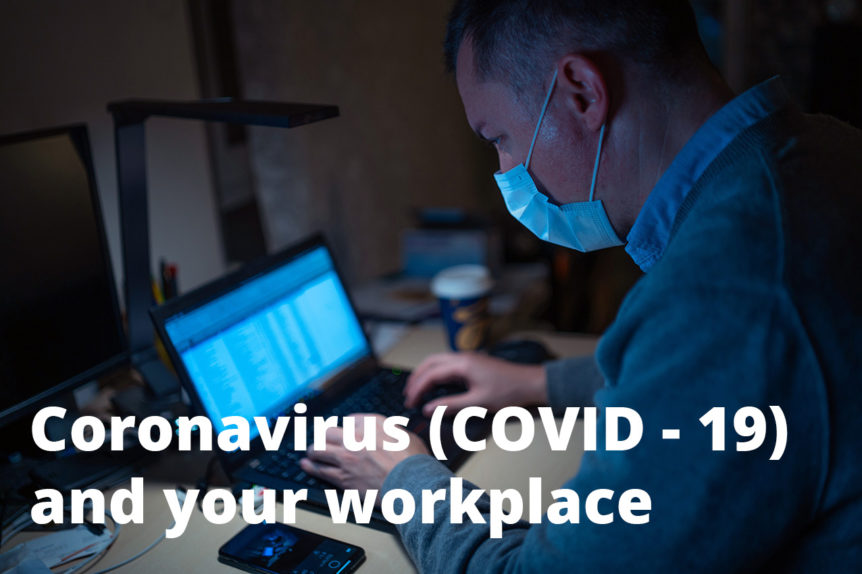To be upfront, this article is not to rehash the official and expert health advice on mitigating transmission of the Coronavirus. Instead, it is to help you PLAN for the employment related issues that will need to be answered.
It focuses on the questions we are receiving right now from businesses just like yours (small, medium and large) and also on what we think should be best-practice.
TIP: Given the increasing and rapid response in government initiatives taking place, we have placed links to the OFFICIAL RESOURCES at the end of this article to help you find the answers you’ll need and to stay on top of them yourself.
What is the Coronavirus?
Coronavirus (COVID-19) is a respiratory illness caused by a new virus. Read the World Health Organisation information HERE.
What to PLAN for?
Chances are likely that the virus will soon affect your business and your workforce in one form or another – and a basic plan (or knowing where to find information to answer the questions a plan will need to address) is the first step to managing your response and, in some cases, legal obligations.
Sections to consider in a basic plan:
- Purpose on why the plan is needed?
- Scope on who it will apply to?
- Responsibilities – who has them and for what?
- Strategy for dealing with issues (see examples below)
- Timeframes to implement strategy, how long the plan will be in place
- Practical steps to manage virus transmission
- Communication on this issue and how it will be managed with the workforce and other stakeholders (like clients).
- Resources to find reliable information (Company and external)
Your plan could even just start by copying the below ‘issues’ and knowing you have the answers at hand or not.
Issues to consider when building your plan:
- Caring for a child when their school closes.
- How and when to apply sick leave entitlements?
- What happens when an employee exhausts paid leave?
- Will you provide ‘additional‘ paid leave for all employees or rely on the legislation and government subsidies?
- How will you manage events and meetings if the government enacts total social distancing requirements?
- Employees taking annual leave overseas (travel-banned countries or other).
- Employees returning from leave (travel-banned countries or other).
- Employees wishing to proactively self-isolate.
- How will you respond to a request for flexible working from home?
- When can you stop an employee from entering the workplace?
- When you can ask an employee for a medical certificate?
- When can you direct an employee to attend a medical examination?
- What Occupational Health and Safety measures do you need in place to allow an employee to work from home (e.g. a ‘working from home safety checklist’)?
- What if the employee’s role cannot be undertaken remotely?
- Do I need to introduce any support measures to help deal with stress or panic in the workforce?
- How often will the business communicate with employees and what tools will facilitate this best?
- Do you have any vulnerable workers who may need to be given special consideration and what this looks like?
- Review Fitness for Work policies and procedures (or similar e.g. Travel) to ensure instructions are clear and consistent should employees show symptoms consistent with a virus.
- What activities need to be altered internally (e.g. how will you continue to recruit a workforce if travel bans or self isolation are in place)?
- ANYTHING ELSE that is important to YOUR business continuing to operate safely!
TIP: Create broad Strategy Sections to place similar issues together. For example ‘LEAVE’ can cover everything to do with taking leave. ‘TRAVEL’ can reference issues like employees returning from holidays through to cancelling non-essential business travel.
Please note: this is not an exhaustive list so use as a starting point alongside the other resources at the end of this article!
… and then do this ONE thing, COMMUNICATE!
In your communication, consider advising employees:
- You’re creating a plan and are available to discuss any concerns.
- Look to the sources of truth such as the Fair Work Ombudsman, the Australian Government’s Dept of Health or the World Health Organisation (See following)
- To take heed of government travel and social distancing warnings and consider altering plans accordingly.
- To communicate their plans ahead of travelling so you can work together for when they return from their travel.
- When self-isolating may be required (it might not currently be needed in your workplace) and how this will be managed, including working from home and payment of time.
- Discuss how and when ‘fit for work’ medical certificates may be required.
- To read OFFICIAL information or speak to the Company before jumping to conclusions.
TIP: Create a number of regular REMINDERS to update your workforce daily or weekly.
Leave a vacuum of information and people will find their own answers – and not always the right ones!
It will be a balancing act to not contribute to an employee’s sense of urgency – but being proactive and having a plan is the first step to also addressing this potential issue.
Help is at hand
There is no ‘one size fits all’ to a request (see just the short list of issues that made up our suggested starting plan – all based on real issues happening right now).
So the team at Quantum Human Resources is offering a FREE 10-minute consultation to make sure you have the RIGHT information and can address an immediate priority.
This is a small way in which we will try to do our part in helping business navigate a challenging time.
CLICK below to book your FREE 10 minute support call:
Official Resources
In addition, here are just a few of the relevant Australian government and expert links you can use as part of your planning:
This article was last updated Tuesday, 27th April 2021.

